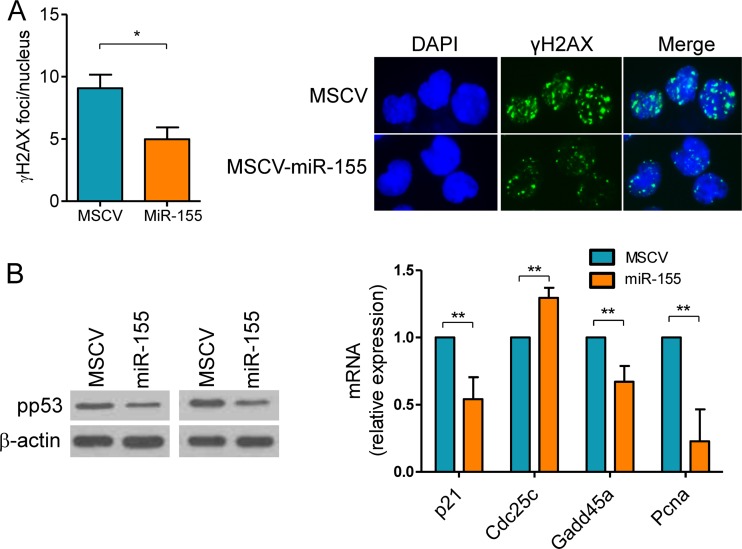FIG 3.
miR-155 reconstitution rescues the aberrant DSB formation and p53 activation in B cells. Mature B cells were isolated from four miR-155−/− mice and successfully transduced with a retrovirus expressing this miRNA or an empty control (MSCV). (A) Cells transduced with MSCV-miR-155 formed significantly fewer DSB foci (*, P < 0.05, Student t test), as determined by γH2AX IF, than their control counterparts. Data shown are mean ± SD from the four independent assays; 50 nuclei were counted per cell type in each assay. A representative example of the γH2AX IF is also shown. (B) Left panel, Western blot analysis of phospho-p53 (Ser18) levels in miR-155−/− B cells transduced with empty MSCV or MSCV–miR-155 shows a decrease in p53 phosphorylation following miR-155 expression. Right panel, real-time RT-PCR quantification of p53 transcriptional targets confirms the significant suppression of p53 activity upon miR-155 reconstitution (**, P ≤ 0.01, Student t test). Data shown are the mean ± SD from three independent assays (6 mice) performed in triplicate and are displayed as relative expression.

